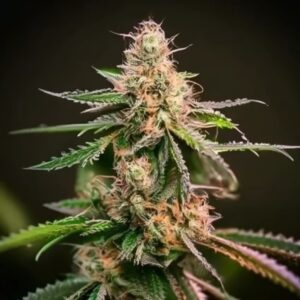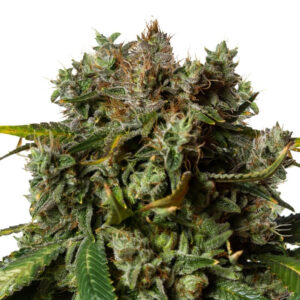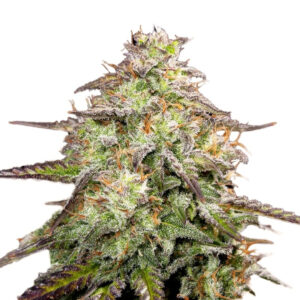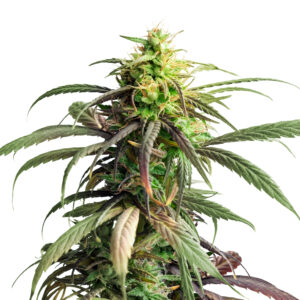If you’re growing weed at home, learning how to identify the sex of your plants early is one of the most important skills you can develop. It can make or break your harvest. Sexing cannabis plants means figuring out whether your plant is male, female, or hermaphrodite—before it’s too late. Why? Because only female plants produce smokable buds rich in cannabinoids like THC and CBD. Male plants, on the other hand, can pollinate your females, ruin your yields, and seed your buds.
This guide will teach you when and how to spot the differences between male and female cannabis plants, what signs to look for, and how to avoid the dreaded “accidental pollination” that plagues so many beginner growers.
Whether you’re growing cannabis indoors or outdoors, sexing cannabis plants is crucial if you want potent, high-quality buds. Only female plants produce the sticky, resin-covered flowers that contain THC, CBD, and all those flavorful terpenes.
Male plants don’t produce usable buds. Instead, they grow pollen sacs designed to fertilize females. If a male goes unnoticed in your grow space, it can pollinate your entire crop. This causes female plants to shift energy away from bud production and into seed production—resulting in lower yields and seedy, less potent weed.
Identifying male plants early lets you remove them before they cause any damage. It also gives you control over breeding, prevents wasted resources, and ensures your females reach their full potential.
Timing is everything when it comes to sexing cannabis plants. The earlier you can tell whether your plant is male or female, the sooner you can take action—either by isolating, removing, or nurturing it.
Most cannabis plants begin to show their sex between week 3 and week 6 of the vegetative stage, depending on genetics, growing conditions, and light cycles. If you’re growing from regular (non-feminized) seeds, this is when you’ll want to keep a close eye on your plants every day.
In some cases, especially in outdoor or photoperiod grows, pre-flowers can appear before switching to the flowering stage. Under 18/6 light, you may need to wait a bit longer. Once plants receive 12 hours of uninterrupted darkness (a trigger for flowering), sex characteristics develop rapidly.
Factors like plant stress, poor lighting, or overfeeding can delay or confuse early sex traits, so be patient—but observant.
When sexing cannabis plants, male plants are usually the first to reveal themselves. They tend to grow taller and faster than females, with fewer leaves and more space between nodes (the joints where branches grow).
The most obvious giveaway is the formation of pollen sacs. These look like tiny balls or bananas clustered at the nodes—no white hairs, just smooth, round pre-flowers. If left unchecked, they’ll eventually open and release pollen that can fertilize nearby female plants.
If you spot one, don’t panic—just act quickly. Most growers remove male plants as soon as they’re identified, unless they’re intentionally breeding. Even one male can pollinate an entire crop.

Spotting female plants is every grower’s goal when sexing cannabis plants. Why? Because only females develop the resin-packed buds we love—full of cannabinoids like THC and CBD.
Female cannabis plants start by showing small, teardrop-shaped calyxes at the nodes (the area where branches meet the main stem). From those calyxes, you’ll see fine white hairs emerge—called pistils. These hairs are the reproductive parts of the plant and will later become covered in sticky trichomes during flowering.
Once you’ve confirmed you have a female, the next step is protecting her from stress, light leaks, and—most importantly—male plants nearby. Stress or pollination can negatively impact bud development and potency.
While sexing cannabis plants, there’s one more category to watch out for: hermaphrodites. These are plants that develop both male and female sex organs—meaning they can produce buds and pollen at the same time.
Hermaphrodites usually occur due to stress, poor genetics, or environmental issues such as:
You can spot hermaphrodites by looking for a mix of pistils and pollen sacs on the same plant. Sometimes, you’ll even see “bananas”—open pollen structures inside forming buds. If these appear, they can ruin your entire harvest by seeding nearby females.
What should you do? Most growers remove hermies as soon as they’re identified. However, some may isolate them and monitor closely—especially if only a few pollen sacs appear late in flowering. In general, prevention through stable genetics and low-stress growing is the best strategy.
If you’re new to growing, sexing cannabis plants might feel intimidating—but it doesn’t have to be. With the right tools and a little patience, even first-time growers can confidently identify male, female, and hermaphrodite plants.
The more grows you complete, the easier it becomes. And remember, it’s better to wait an extra day to be sure than to toss a plant too soon or let a male pollinate your crop by accident.
One of the most common beginner questions when sexing cannabis plants is: can you tell the sex from the seed alone? Unfortunately, the answer is no—at least not with your eyes.
There are rumors and myths online claiming you can identify a plant’s sex by seed shape or size, but no scientific evidence supports this. The only reliable way to know a plant’s sex is to let it grow until pre-flowers form.
Feminized seeds are bred to produce female plants 99% of the time. These are ideal if your goal is flower production only. They’re created by stressing female plants to produce pollen, which is then used to pollinate another female. The result? Seeds that are genetically female.
Regular cannabis seeds produce a mix of male and female plants—roughly 50/50. If you’re using regular seeds, sexing your cannabis plants early is essential to avoid accidental pollination.
In short: you can’t sex seeds visually, but choosing the right type of seed gives you more control over the grow from day one.
Mastering the art of sexing cannabis plants is one of the most important skills for any grower. Whether you’re growing from regular seeds or just want to avoid seedy buds, identifying male, female, and hermaphrodite plants early can save you time, stress, and wasted effort.
By learning the key signs—pollen sacs, pistils, calyx shapes—and checking your plants regularly between weeks 3 and 6, you’ll have a much better chance at a healthy, potent, and seed-free harvest.
Remember: observe, don’t rush, and use the right tools. The more you grow, the easier it becomes to spot the difference—and to protect your garden from unwanted pollen.
Whether you’re a first-time hobbyist or an experienced cultivator, early sexing gives you the power to grow with confidence.













Related Posts

Defoliation is a technique used by expert growers as a way to increase the overall yield of their harvest, though it comes with a whole array of risks and so should only be used by people who really, really know what they are doing. a rundown on what defoliation is

As a happy Czech living in the UK, my heart fills with joy whenever I reminisce about my homeland, the Czech Republic. While the country is known for its rich history, stunning architecture, and vibrant culture, there’s another aspect that ignites my passion, the cannabis scene.
Although cannabis laws in the Czech Republic are currently limited, with personal use being…

Introduction to Lollipopping
If you’re looking to grow the healthiest and highest yielding marijuana plants, it’s essential to familiarize yourself with lollipopping, a pruning technique that when done correctly, will optimize the growth of your White Widow strain. Typically, this method is performed on indoor plants to increase yields by eliminating the bottom growth that receives the least amount of…